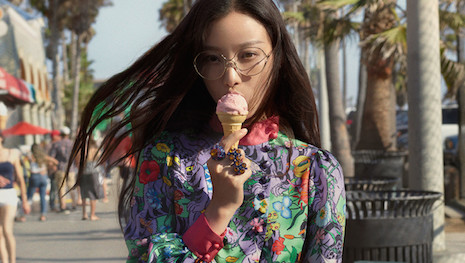 Fendi's new film series is set in Shanghai and Hong Kong. Image credit: Fendi
Fendi's new film series is set in Shanghai and Hong Kong. Image credit: Fendi
CAPE TOWN, South Africa – As China continues its rise to become the world’s largest luxury market, female empowerment, technology and sustainability are increasingly shaping the nation.
In an interview with Vogue Business' chief editor Lauren Indvik at the Condé Nast International Luxury Conference on April 11, investor Wendy Yu shared her perspective on the Chinese luxury and fashion business. She also spoke about her career as a young businesswoman in China.
“There is potential for scale and growth in the Chinese market,” Ms. Yu said. “As a consumer I think more from a sustainable perspective, and I think that’s a change in China because our consumers are increasingly sophisticated and educated.”
Personal perspective
Ms. Yu believes that the emergence of younger, powerful women in China is changing the luxury landscape.
These women are looking to show their success and individuality through their luxury goods purchases. While in the past luxury goods were desirable as status symbols, younger consumers are more interested in learning about a brand’s heritage and values.
“More females are playing a significant role in the Chinese fashion landscape,” Ms. Yu said. “The new generation also has a new perspective on creativity and fashion.”
Alibaba opened an artificial intelligence-enabled concept store. Image Credit: Alibaba
Technology, particularly artificial intelligence, is also playing more of a role in China.
Last summer, Chinese ecommerce giant Alibaba opened “FashionAI,” a temporary concept store that harnessed artificial intelligence capabilities for a stress-free shopping experience.
“Smart mirrors” located throughout the store displayed product information when nearby shoppers touched or picked up a garment. Data collected by the smart mirrors could help retailers learn about what items are popular among shoppers, as well as help track their movement around stores (see story).
As Chinese consumers are becoming more sophisticated, they are also catching up to other affluents with their interest in sustainability.
Sustainability has become a necessity rather than an option for luxury, changing how brands approach all aspects of their businesses.
China’s spectacular growth in luxury consumption recently is primarily driven by Chinese women buying ready-to-wear fashion, jewelry and cosmetics, according to Bain & Company.
Chinese luxury consumption is primarily driven by two demographics: Chinese millennials and Chinese women. In China, millennials purchased an average of eight luxury goods per year while non-millennials purchased an average of only five (see story).
Millennial appeal: Chinese actress Ni Ni in a recent Gucci eyewear campaign shot in Venice Beach, CA. Image credit: Gucci
Not even 30 years old, Ms. Yu is also representative of the millennial Chinese affluents that marketers are coveting.
Ms. Yu was born in China to a billionaire manufacturer and attended British boarding school, providing her deep understanding of two different cultures. As an investor and philanthropist, she also has perspective as a powerful young women.
“I prefer to be underestimated than overestimated,” Ms. Yu said when asked about her experiences meeting with older businesspeople.
Chinese considerations
During the conversation, Ms. Yu also reminded luxury marketers to look at China more critically, instead of as one single market. She noted that its population rivals that of Europe, and a city such as Shanghai is different from a Tier 2 or 3 city.
Regardless of sector, luxury brands need to refine their targeting practices as competition for business in China increases.
During a Luxury Daily webinar, “China: Route Forward for Luxury,” industry experts discouraged marketers from looking at Chinese consumers as a monolith.
Brands also need to be aware that with so many ways to reach and engage with Chinese consumers, a luxury purchase can happen on a variety of channels. For instance, within a country as large as China, luxury stores are not always easily accessible (see story).
“Different regions of China require different strategies,” Ms. Yu said.


